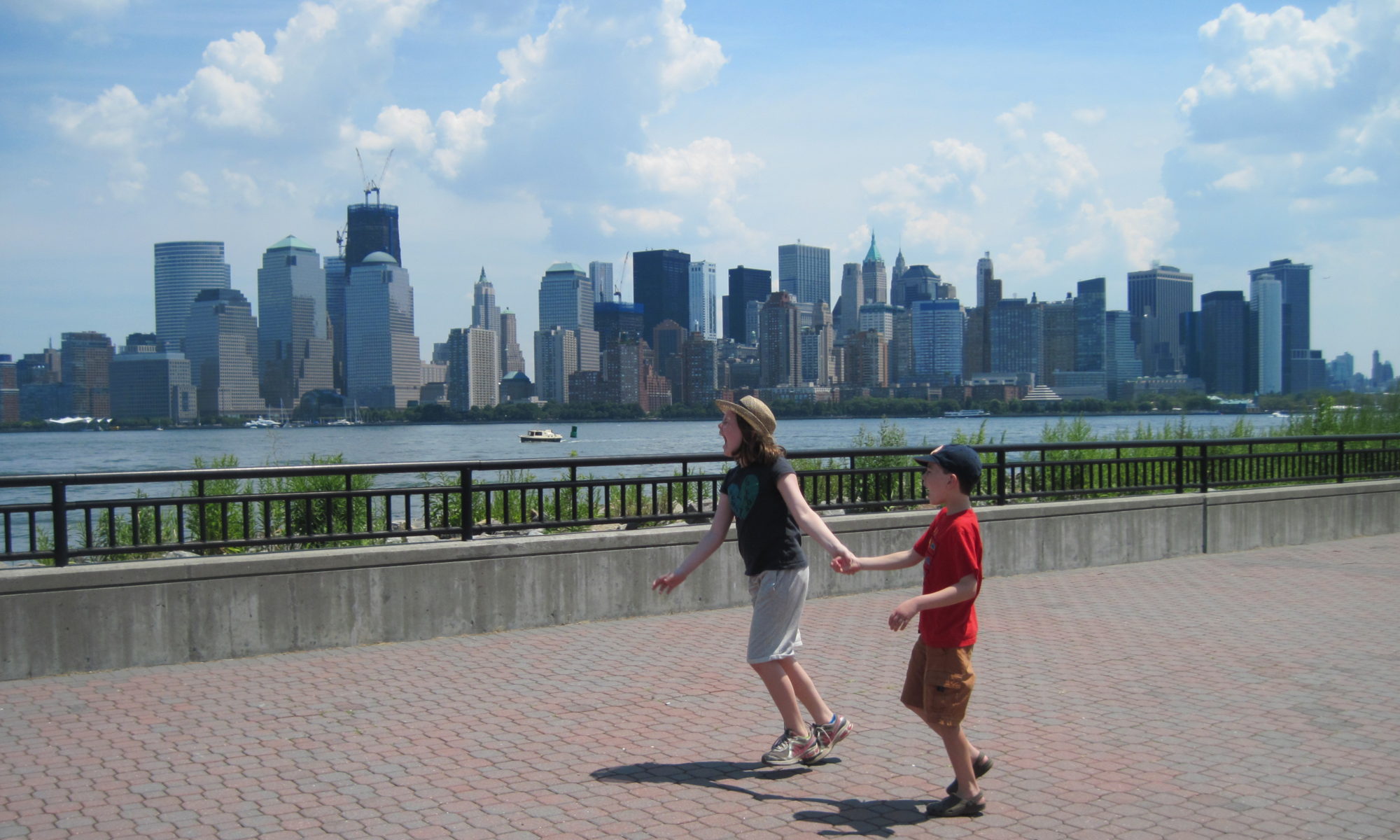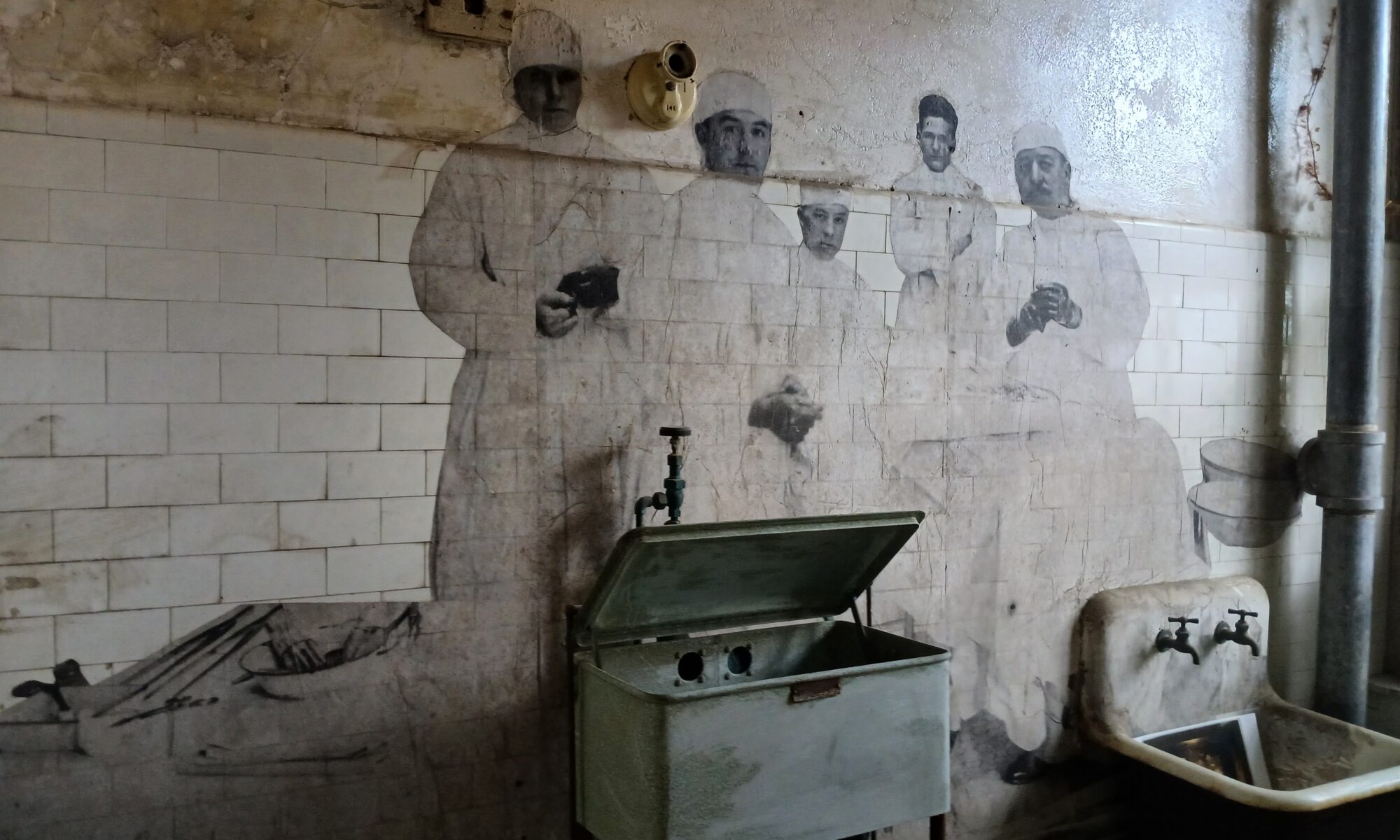I’ve been to Ellis Island and the Statue of Liberty a handful of times since I’ve lived in New Jersey Each time I learn something new. But after taking the Ellis Island Hard Hat Tour with kids (have you even heard of it?) I now know even more. This is a great tour to take with kids – though the official age to go is 13+ (more on that later). You see a whole different side of Ellis Island – literally and figuratively.
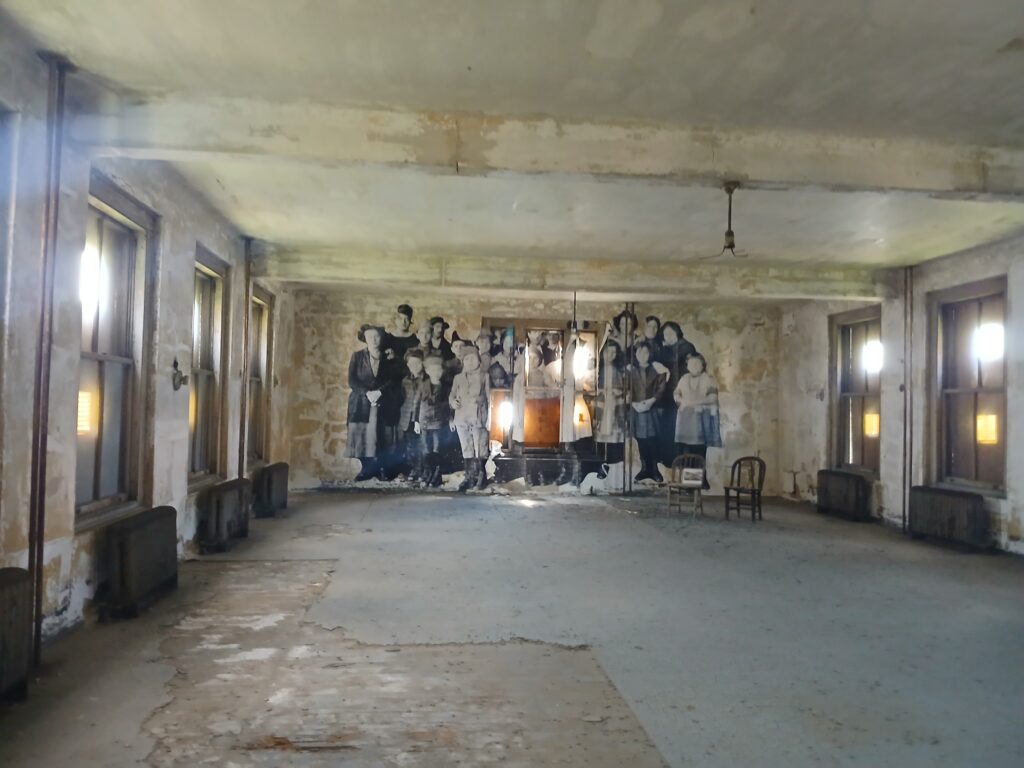
You probably already know that millions of people went through Ellis Island en route to immigrating to the United States. And that they were checked out by doctors to ensure they were healthy. Ellis Island’s main displays walk you through the process of what they looked for: eye issues, intelligence testing, other obvious signs of sickness. They marked people’s clothing with chalk so that other medical personnel could evaluate them further.
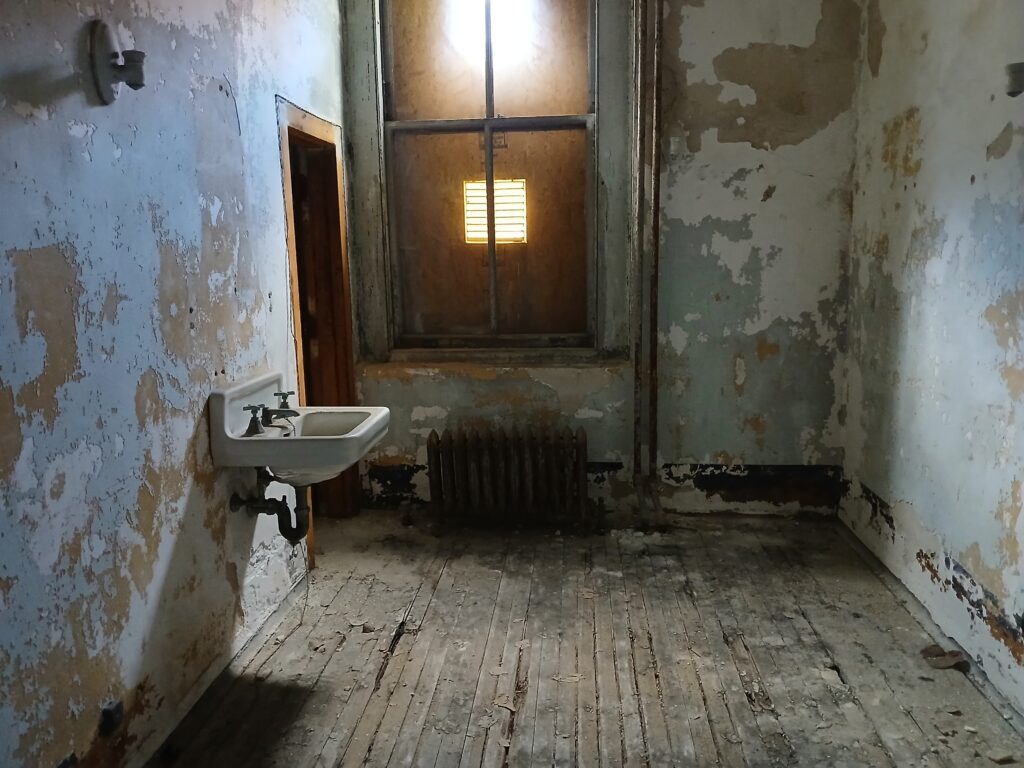
The Ellis Island hospitals
Those that did not pass the test ended up at Ellis Island’s hospital, what was eventually a two-facility operation with more than 40 doctors and more than 29 buildings dedicated to medical care, by 1911. The U.S. Public Health Service operated a 750-bed system consisting of 275 beds in a contagious disease hospital building and another 450 beds or so for a psych ward, maternity ward, for those who have lower mental acuity (or so they thought and others with colds/flu). They also had an operating room, X-ray plant and mortuary. And an autopsy theater.
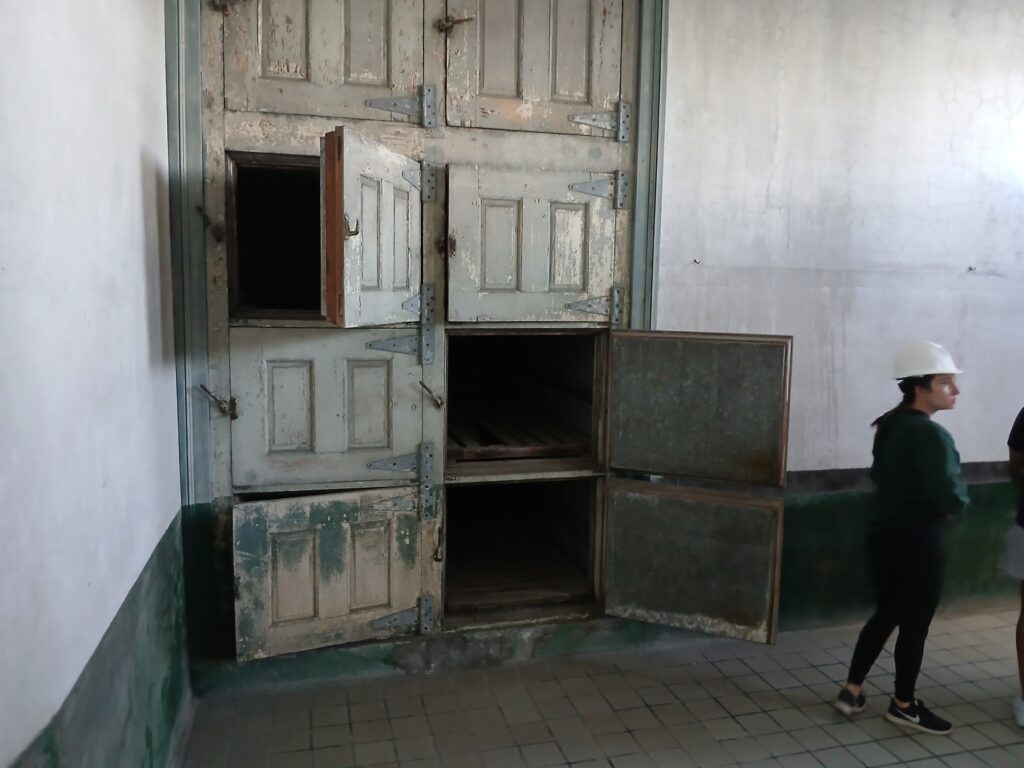
On the hard hat tour you learn about all of this, and get to see some of the spaces as well.
Records from 1900 showed that on Ellis Island, about 3,500 people died, including 1,400 kids – not a great number, but also 12 million or so arrived via steerage class. Those people were packed into the bottom of ships – sometimes 2,000 at a time, without enough water, food or fresh air. It’s miraculous that more didn’t perish after they arrived.
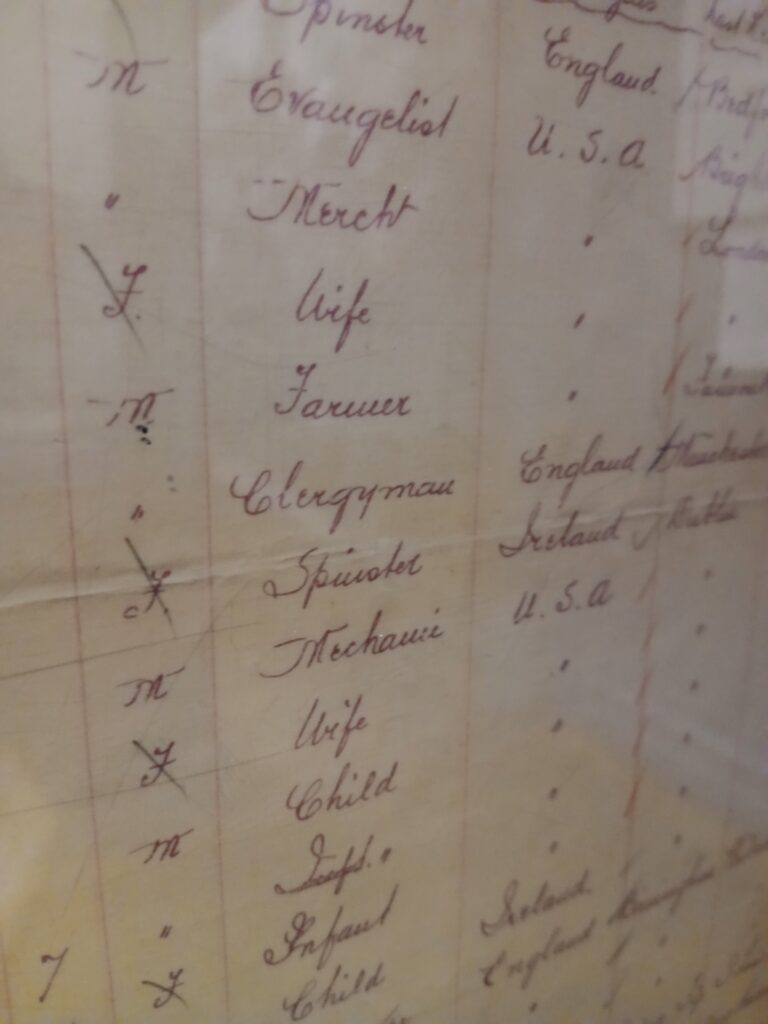
A high daily census
At Ellis Island, 4,000-5,000 people came through daily with an average processing time of 3.5 hours. Officials would enter the boats prior to Ellis Island inspecting some of the people on the boat. Usually first/second class passengers who were fine got off in Manhattan and the rest boarded another boat to Ellis Island for processing. On its highest day, 11,000 people passed through Ellis Island in one single day in 1907.
The hospital was originally on the third floor of the main Ellis Island building. That floor now has special exhibits. But over time it expanded. On the Hard Hat tour, you visit that expansion.
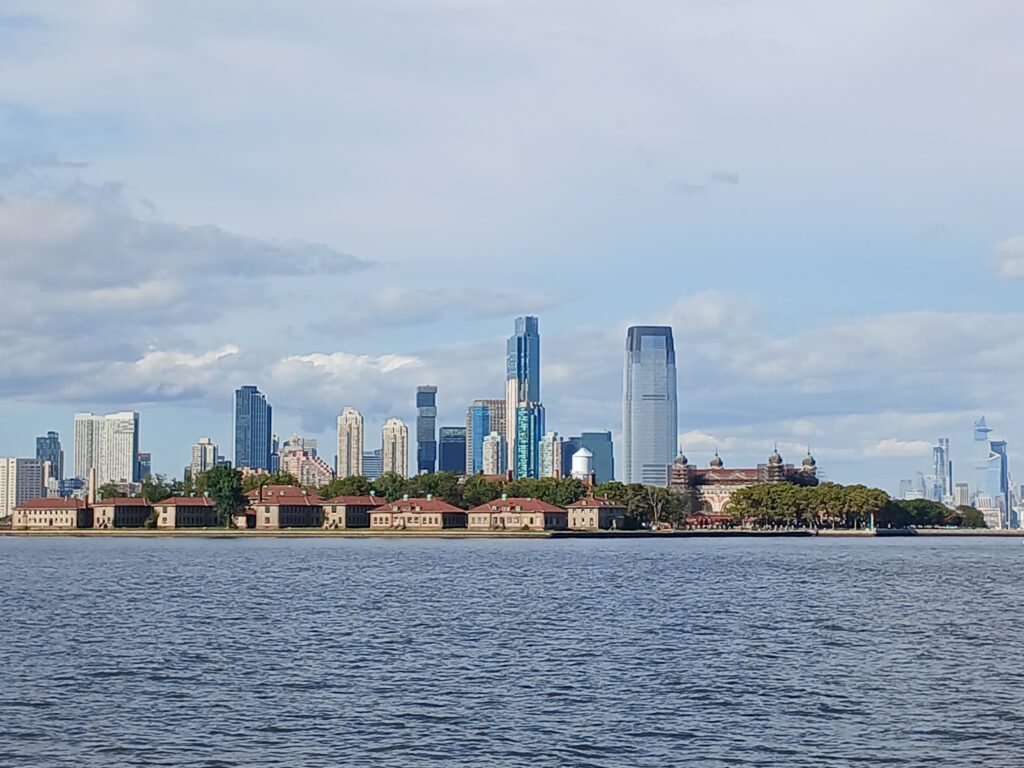
About the Ellis Island Hard Hat Tour
The tour meets in the main entry hall near the gift shop – look for signs overhead. If you don’t get tickets in advance, you may be able to get them at the desk there. You’ll sign your life away on their iPad and go with the guide outside to the grassy area at the appointed time, and then up to the border of New York and New Jersey.
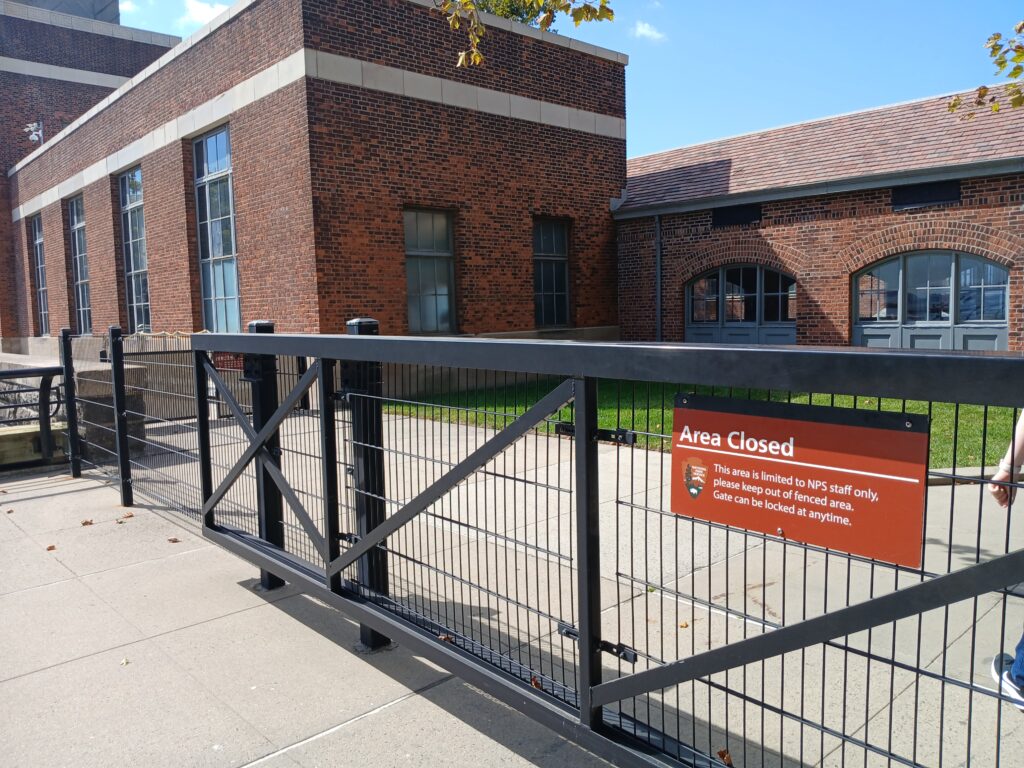
You heard me. There’s a gate you’ll pass through to go to the hospital. It’s a separate island but part of Ellis Island. It was created with landfill from the tunnels and subways that were dug up on New York. You could do a deep dive into which state owns what land/island, but know that the main Ellis Island building where the exhibits are is New York. The hospitals are in New Jersey. The 1998 Supreme Court said so. The Statue of Liberty is in New York. But maybe the part with the gift shop and snack stands are in New Jersey, but the Supreme Court hasn’t decided that yet, and New York gets the taxes from that.
How old is Ellis Island’s hospital?
The height of the hospital use was the late 1920s and the hospitals were closed in 1954. The government deemed they were surplus, no longer needed. When that decision was made, the people working there abandoned the site immediately. The guide said that the dining room table was set for dinner and when excavating the building decades later, they found it was still set. Now that dining room is used for teaching.
While it was abandoned, though, people pulled their boats up and looted the facility, taking copper, brass, mirrors, lanterns etc. Since then, the government built Bailey Bridge from New Jersey to the island, which allows select cars onto the island. Not surprisingly, the bridge is heavily guarded.
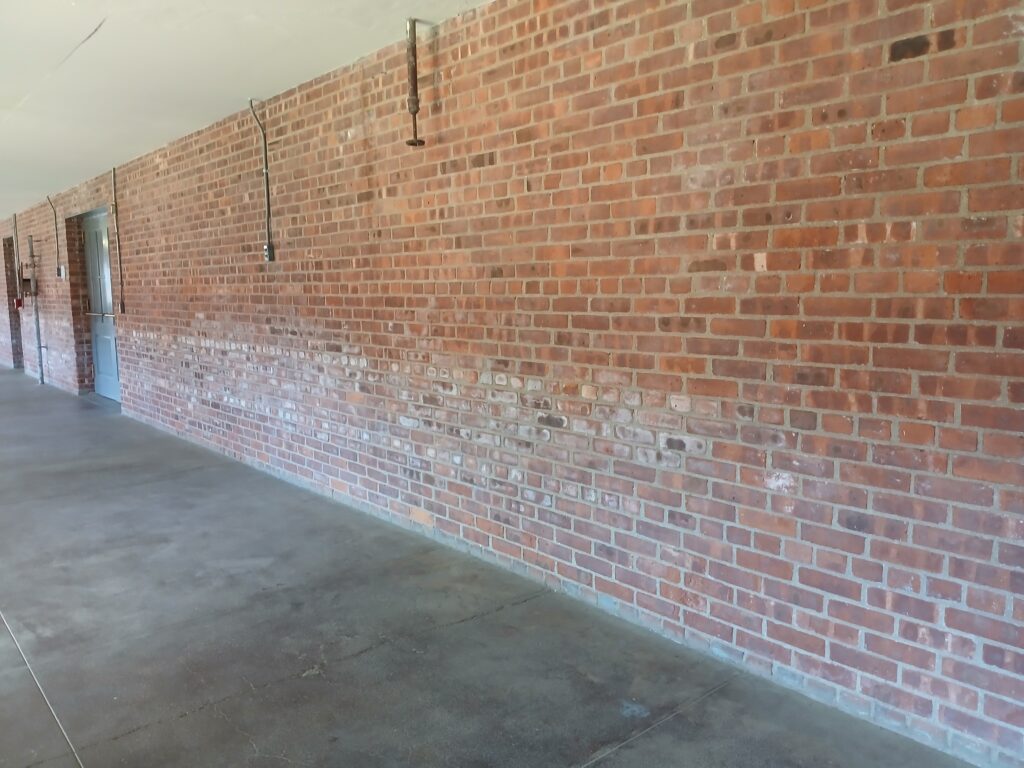
Now we were in the hallway and the guide showed us the line where the surge from Hurricane Sandy came in. It was several feet up the wall. We then went into the “happiest room on Ellis Island,” which not surprisingly, was the door to the ferries. In this waiting area, people waited for their ferry to leave after getting better at the hospital. The waiting area had a currency exchange and food for sale. Off that hall was the aforementioned dining room.
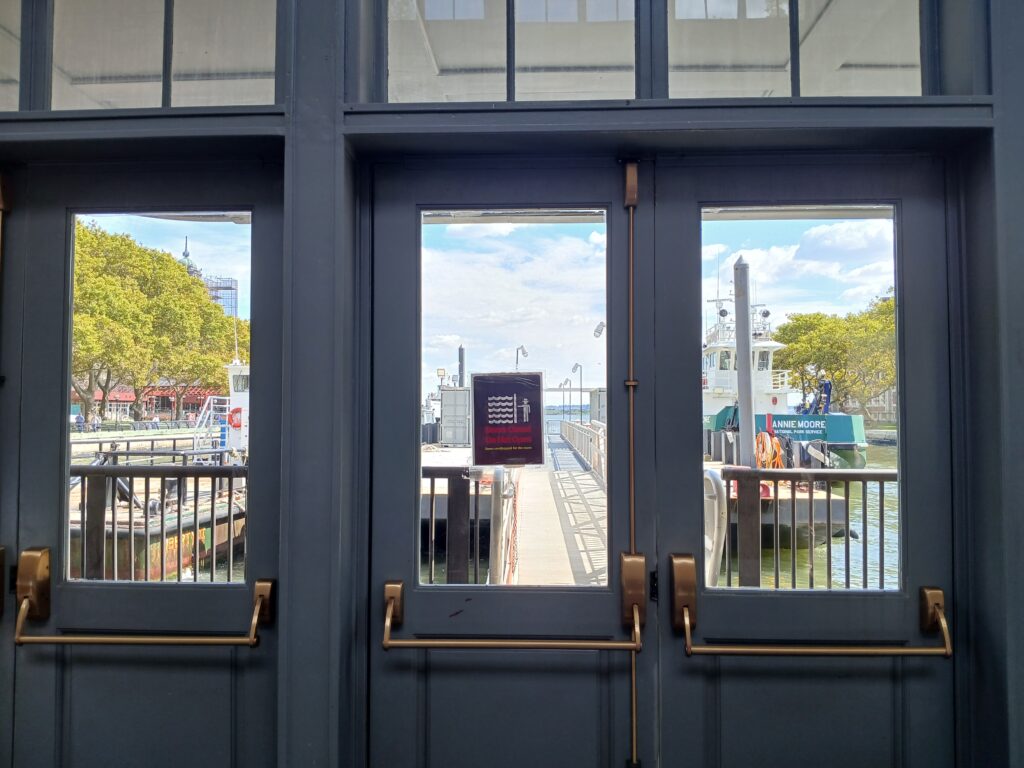
The Hard Hard tour (and yes, we were given hard hats) is run by the Save Ellis Island Foundation. The cost to rehab the buildings is estimated at $500 million and the tours support that cause.
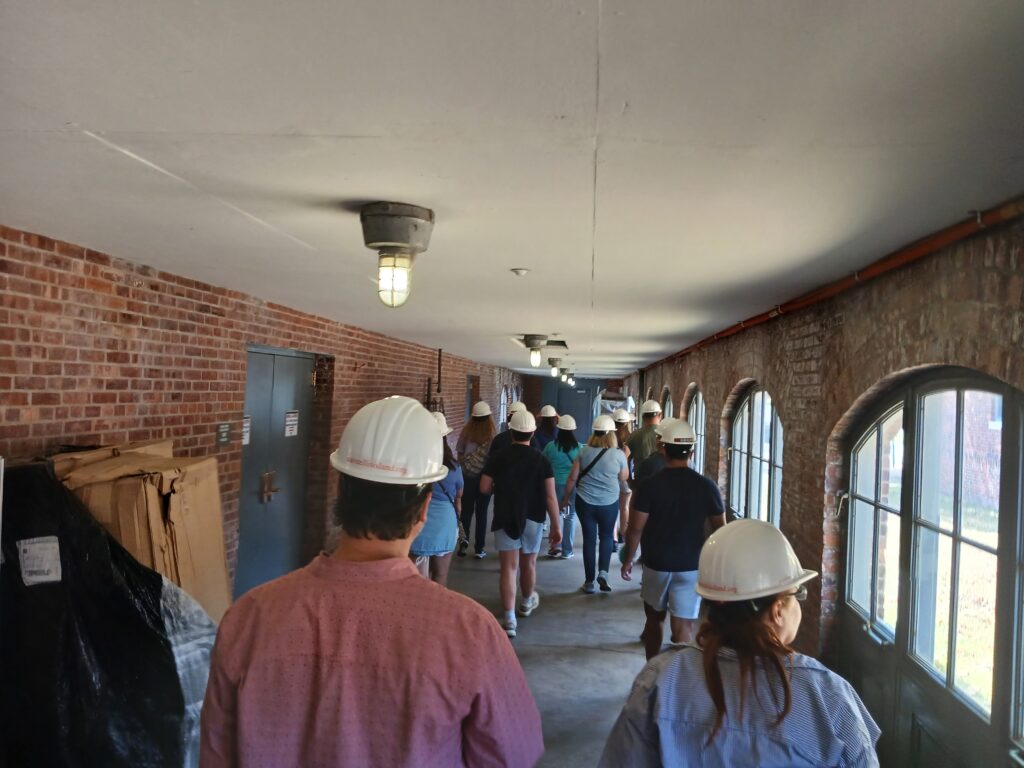
Interestingly the long hallways in the buildings we walked through had windows, but originally did not have glass (there is glass now, though much of it is broken and jagged). The thinking at the time was that germs would not land and stay on people if the air kept moving. By 1915 they put in glass, evidently realizing that fresh air alone was not enough to ward off disease.

We came to the “Y corner” where one side led to the goes to general hospital and one goes to the contagious diseases’ hospital. The general hospital was for acute illnesses like colds, flus and the maternity ward (where 355 babies were born. They were not given citizenship and also many were named after their American doctors and nurses). The general hospital was for short visits. At the time there were no medications, no antibiotics. Medicine was air and sunshine. People were considered adults at 14, important to think about when releasing someone from the hospital on their own, or letting someone through Ellis Island while a parent/guardian were staying behind for medical care.
We visited the general hospital first, built from 1890-1900 and in use by 1900.
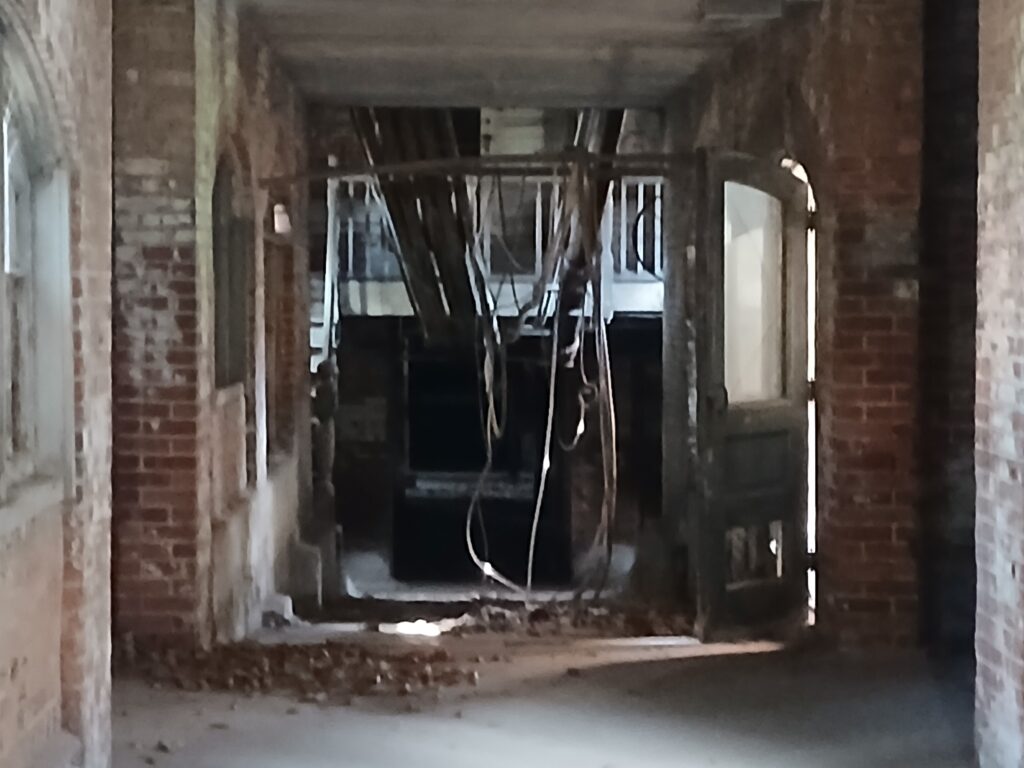
The laundry room
Our first indoor stop was the laundry room, staffed at the time by 15 men worked. At the time, they followed hygiene precautions developed by Florence Nightengale, our guide said – with enough room for social distancing. People washed their hands. They had laundry. Food was medicine. In this laundry room, the men washed 3,000 items a day in big barrel washers.
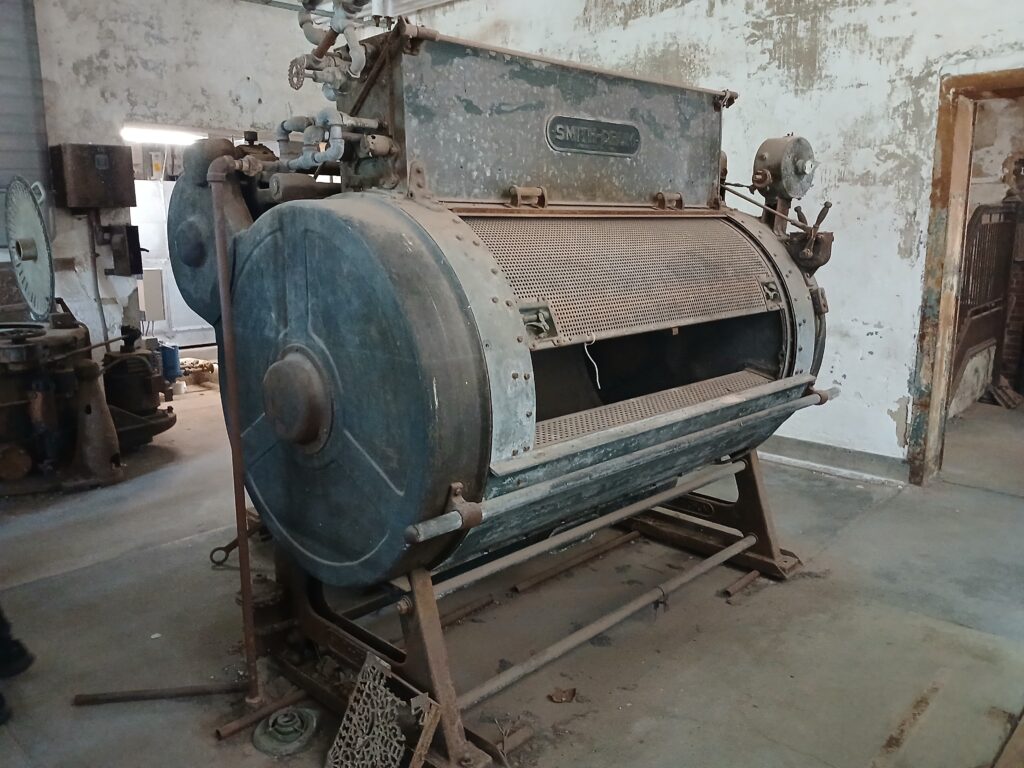
The guide also pointed out the first of the JR photographs incorporated into the building as part of his Unframed, Ellis Island installation. Take a look at that link as the photos are more complete and better quality than what I captured. The photos are life-size and historic from Ellis Island immigrants and there are 22 installations.
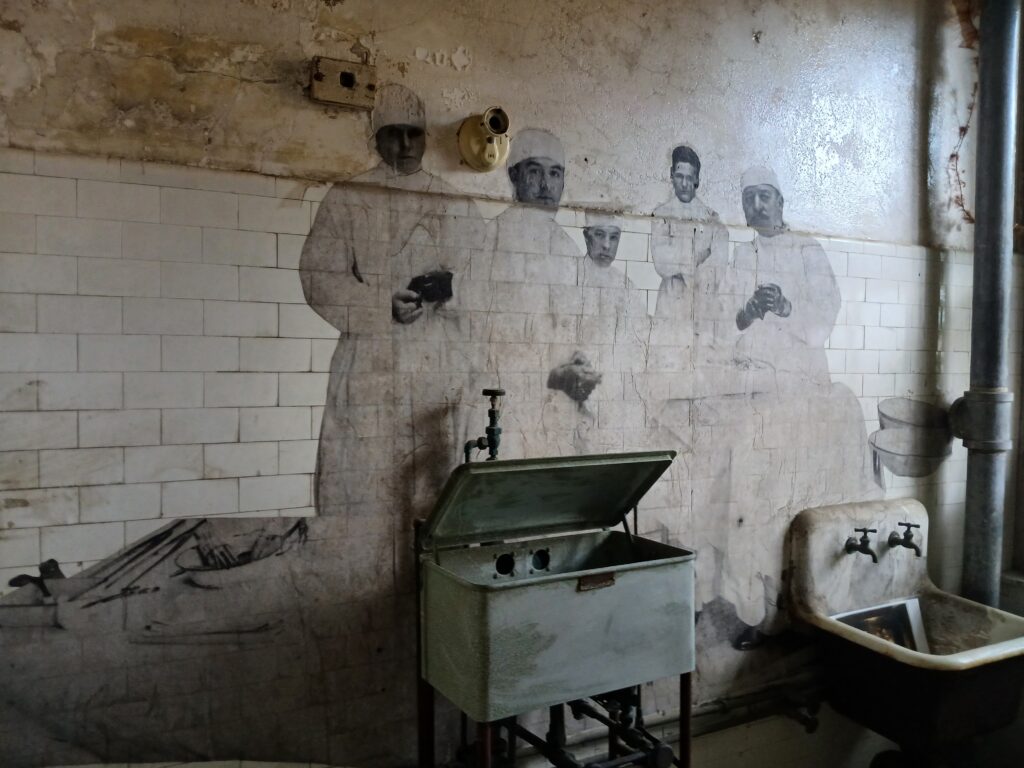
We left the laundry room and headed outside to the green space between the buildings. The guide said we were now on island 2, made from landfill: clay, dirt and concrete from building bridges and tunnels. She pointed out the “psychopatic” ward which held criminals who came over to the U.S. I’m not sure how they were identified as criminals, but the shipping companies had to send back anyone to their home country that Ellis Island didn’t accept, at the boat’s cost. Criminals did not go back in steerage, but they were kept more private in higher quality/class lodgings.
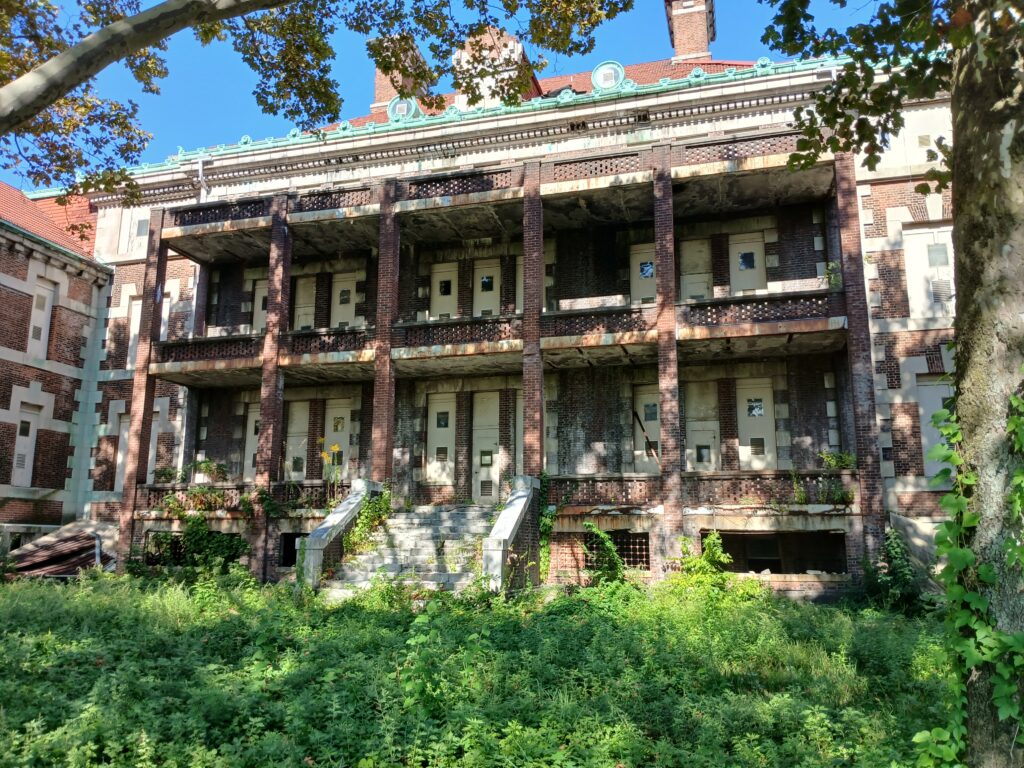
The simple ward
We also saw, from the outside, the “simple” ward – for people with potential mental acuity issues. The examiners would give them mental acuity tests but sometimes language issues confused the examiners and immigrants. She said one immigrant was asked: If you have 2 cow, 2 horses and 2 sheep, what do you have? “I’d be a rich man,” the person responded. The building exit for the “simple” folks was elevated and had bars around it (and a JR installation). The bars were because at the time, the landfill was not complete and there was water underneath the exit, and foot bridges. The people working at Ellis Island were afraid that the simple people would fall in and drown.
In 1857 Ellis Island was 2.74 acres, it is now 27.5 acres with all the landfill. All the grass you see now is on landfill, as are the buildings.
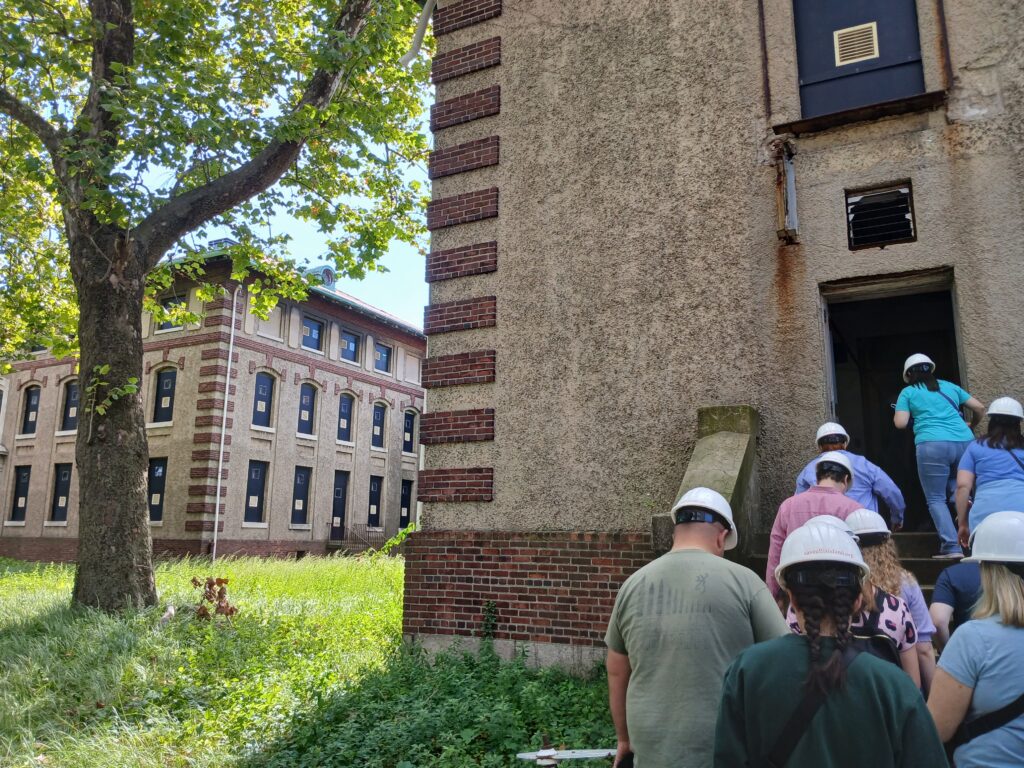
As we walked across the field we saw a newer pavilion, which the guide said was used by the Coast Guard in later years for entertainment. The buildings continued with different use after Ellis Island stopped processing immigrants. The Coast Guard was one of those uses.
The contagious hospital
Now we walked up a set of stairs in the contagious hospital. The building was definitely in need of repair and stabilizing with broken windows, floors that were uneven and chipped, and it felt a bit haunted! They could make a lot of money running haunted tours, I’m sure.
The facility was designed so that the first floor held men, and the second floor held women and children. The contagious ward was built in 1909. The hospital complex as a whole had a staff of 90.
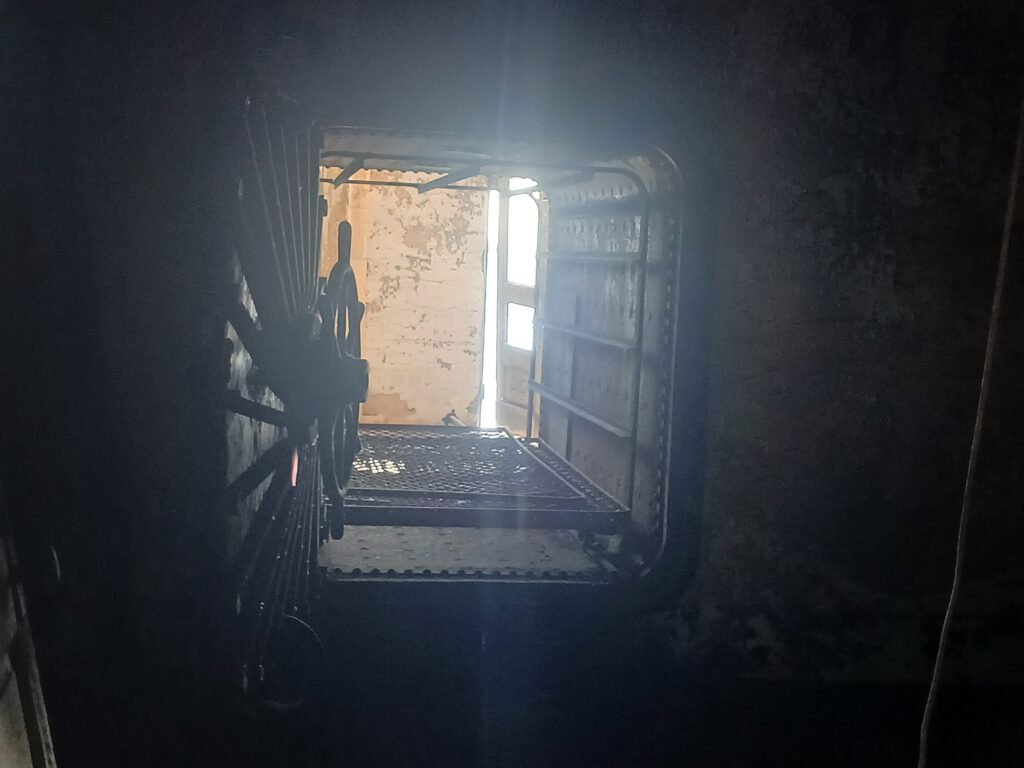
We passed by a room with an autoclave in it, which sterilizes things. In this case, the autoclave was used for stacks of mattresses to decontaminate them.
Autopsy theater
We also went into the autopsy room, which had 8 morgue slots (with refrigeration – which you can see if you walk through that door on the right in the photo below). It was set up as a theater, with hooks on the back wall for doctors to hang their coats. The room’s original colors are still there.
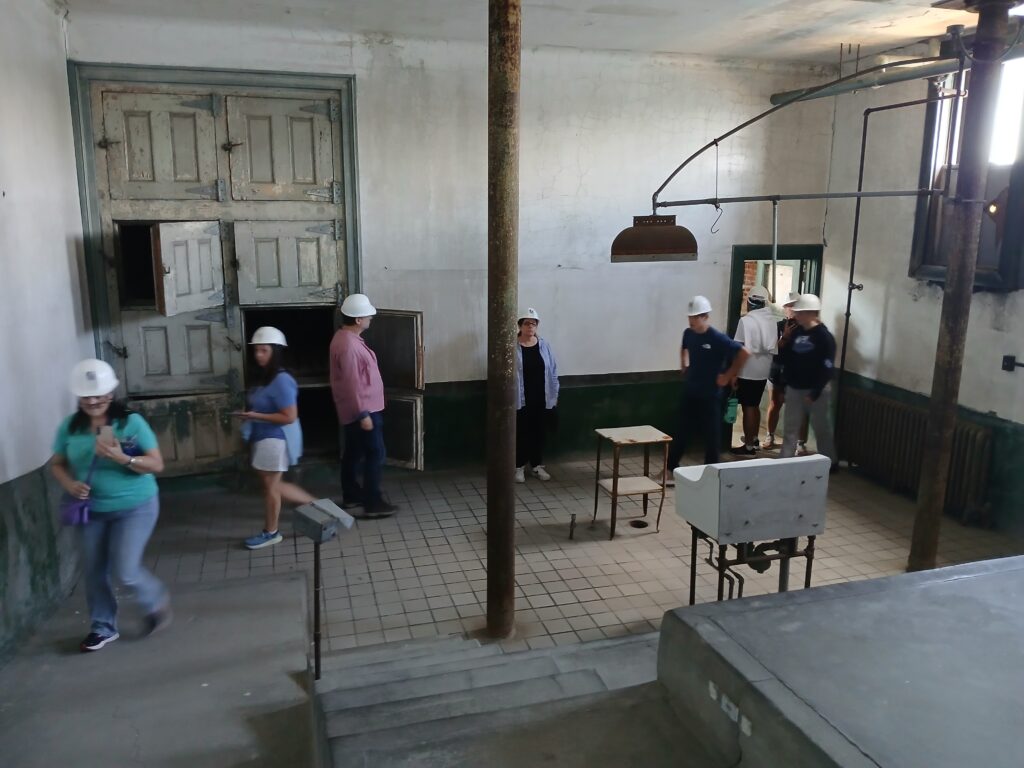
It was a premier public hospital that did research. When someone died, the person’s family could send them back to their country or consent to autopsy. Belleview in New York City was the first public hospital but some doctors there came to Ellis Island to do autopsies or learn.

Favos
We passed by another JR window, which depicted Ukrainian children with favas – like ringworm in their hair follicles. I was going to link to it online but the picture was really yucky so you can look it up on your own. The treatment was to tweeze each hair in the follicle or put on waxy paste made of tree sap, flour and some killing agent, in patches on the head. Treatment would take weeks to months. At the time, volunteers would interpret for the kids and educate them during the treatment.

The kitchen
We went into the kitchen which was not very big. The facility had two registered dieticians. They had a kosher kitchen as well. They served three meals a day, sometimes foods the immigrants hadn’t seen before. One person complained they were served worms and blood, when it was really spaghetti/sauce. Another received a banana and ate it whole, not realizing you had to peel it. One child hadn’t seen ice cream before and liked it so much they saved half under their pillow for later. Another person hadn’t seen white bread before and didn’t know why they were eating a cake sandwich.
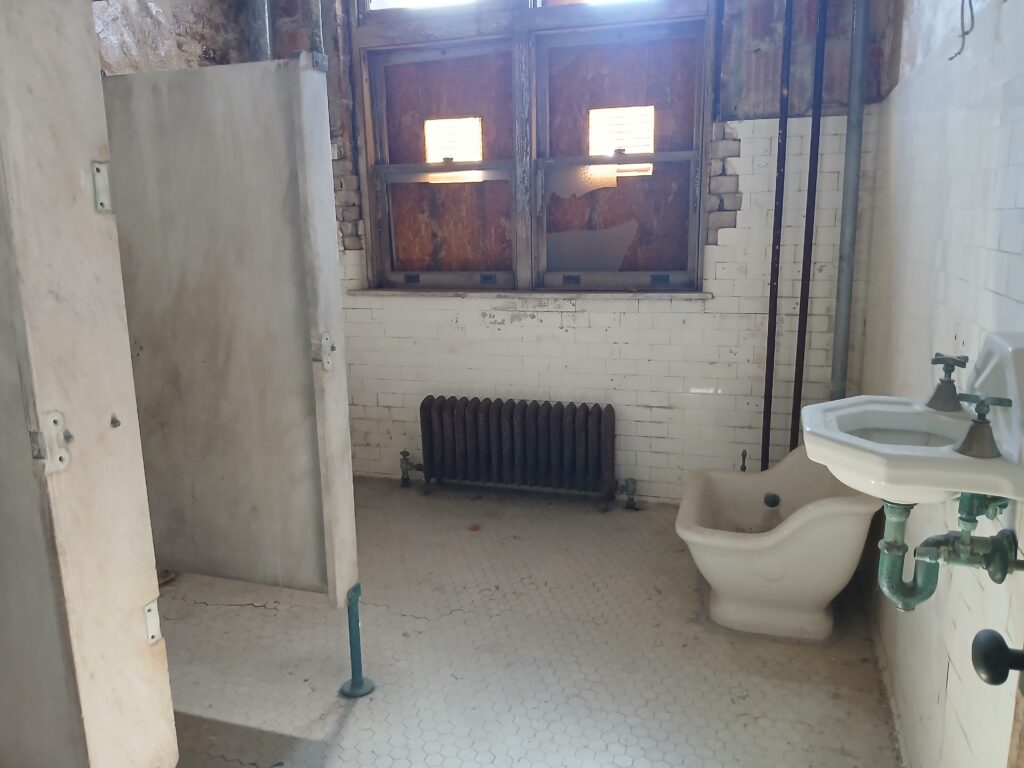
Ward organization
Each ward contained people with just one disease, which separated the patients. Usually they were all in one room with a bunch of beds. When you walk into the ward from the hallway, you’d pass a staircase (so the medical staff could go up and down between the men and the women/children without having to re-gown), a nursing station with a big window into the room, a bathroom for patients, a shower, utility closet, and a changing room/gear room for doctors.
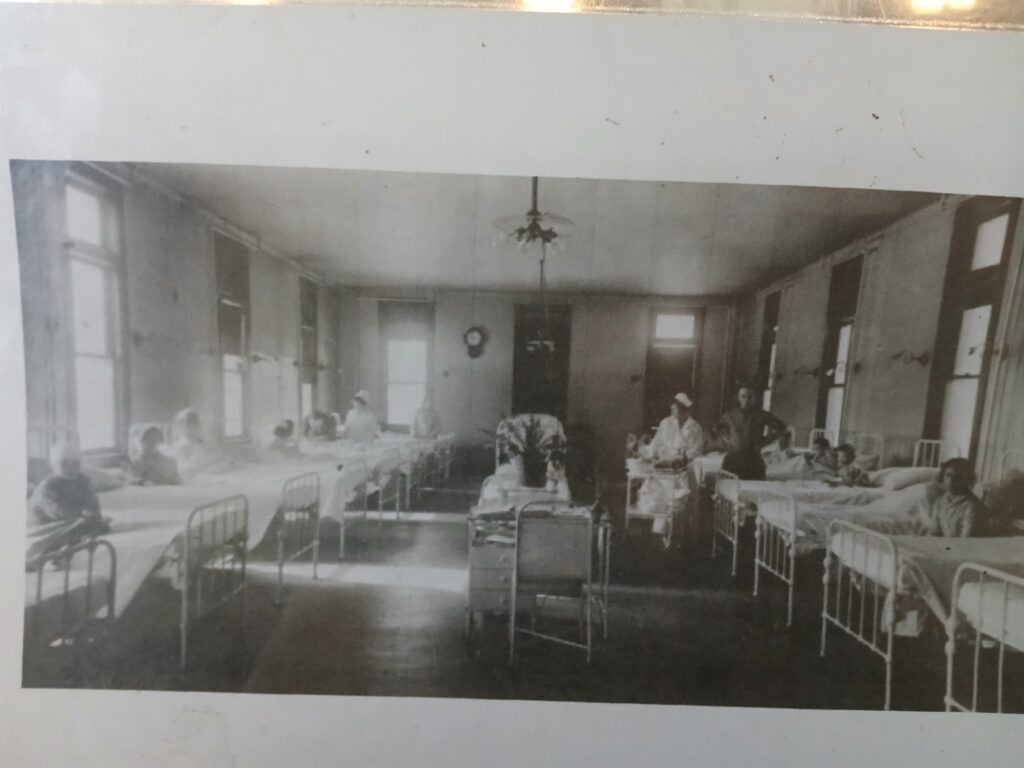
The TB ward
The tuberculosis (TB) ward was different, as the hallways had individual rooms for patients. They were highly infectious and were not able to get out of their room from the inside handle. They had a light they could activate outside the room if they needed the bathroom or help. They also had two sinks. The high sink was for their bloody spit – it went to the incinerator. They could use the low sink to wash their hands or brush their teeth. They had a mirror by the sink, and some were positioned where they could see the Statue of Liberty from it. They also had brass fixtures and metal doors which they didn’t realize at the time were antiseptic.
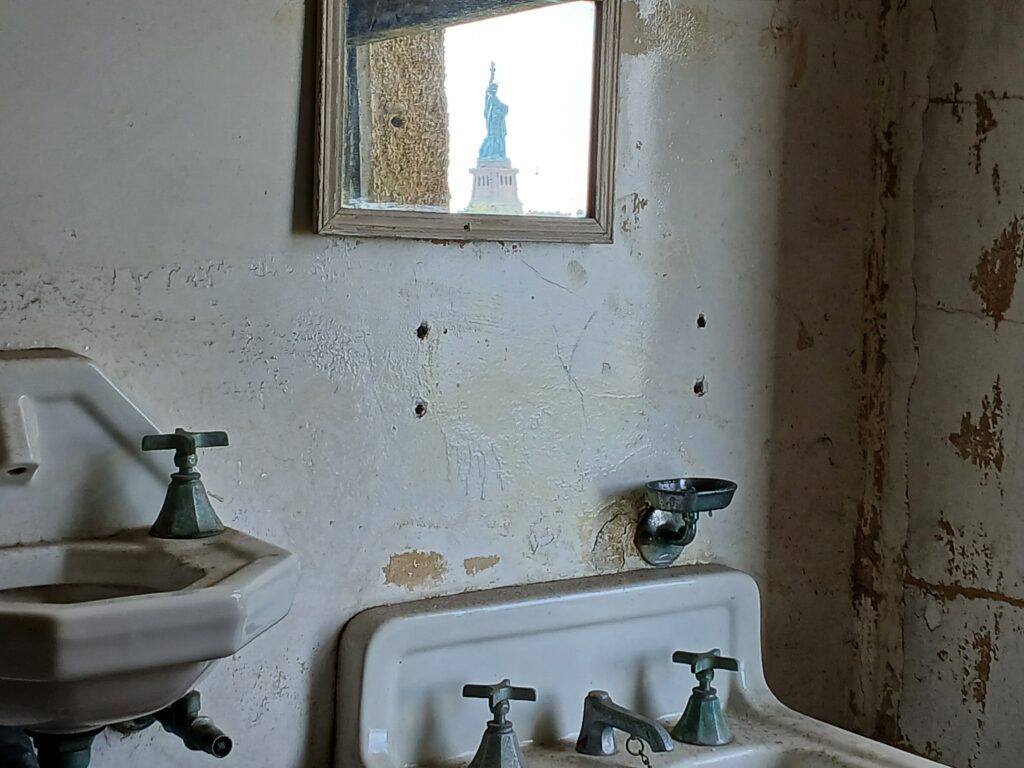
Operating room and palliative care
We visited the operating room which was tiled – making it easier to clean. You can see an original ventilator in there, and an installation by JR showing Dr. Davis, who in charge of the medical staff.
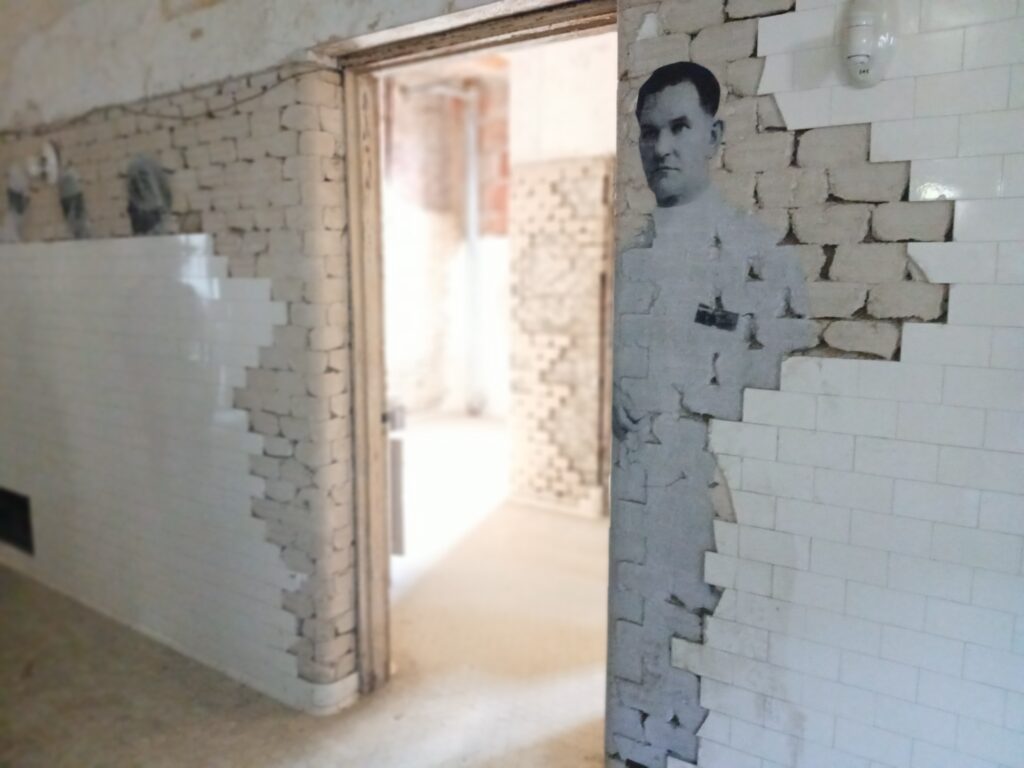
Toward the end of the tour we saw the palliative care room at the end of the building – it was a room with a lot of natural light. And it overlooked the Statue. One patient living out her last days there said they sacrificed so much to get here and now Lady Liberty is turning her back on her. Indeed, the view of the Statue was of her back. Very sad, and very poignant.

Staff quarters
The last thing we saw was the staff living quarters. Dr. Davis’s daughter Nancy came to Ellis Island before the hard hard tours began. She wanted to see the staff quarters. A guard let her in but wasn’t supposed to. She shared photos and stories of growing up there, including how she and other kids living there were ferried daily to school on Governor’s Island. Across from the Davis family, the head psychiatrist’s family lived there too. Their kitchens looked out onto the statue as well.
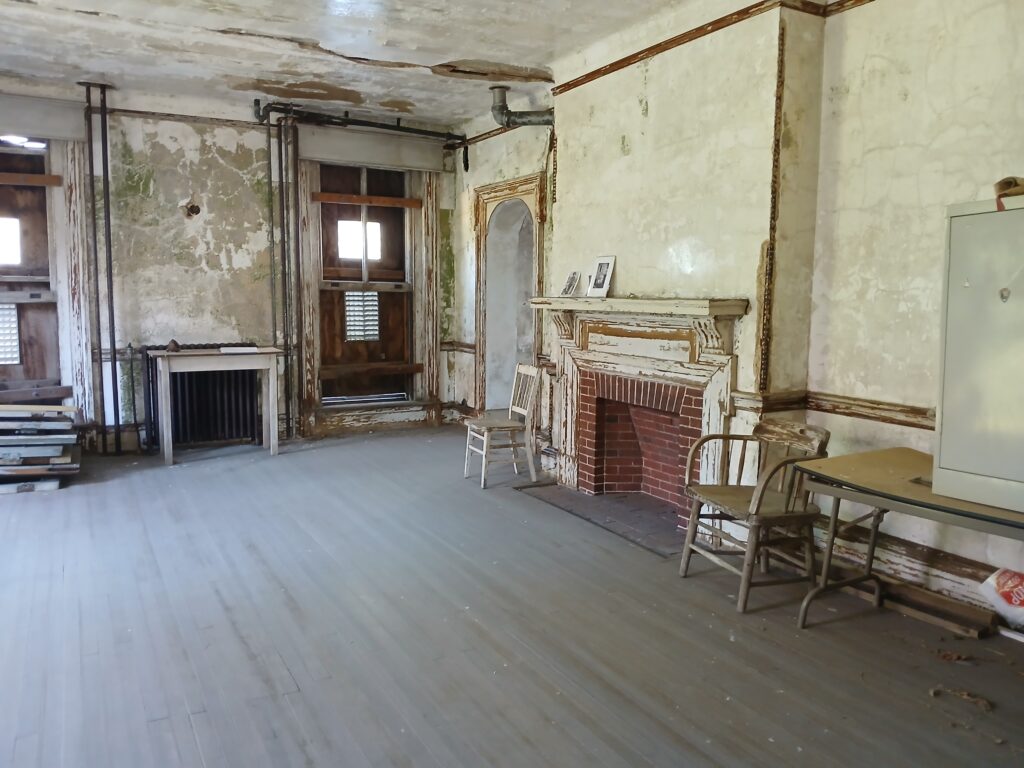
The tour ends
The guide took us back to the grassy area outside the main building. We went back to New York through the gate. You can go back through the Ellis Island exhibits or go wait in line for the next ferry.
If you go on the Ellis Island Hard Hat tour with kids
Tour: The minimum tour age is 13. They may make exceptions if you’re child is more mature and you promise they will be well behaved. There is a lot of broken glass and the flooring is sometimes broken and less stable. There is dust, it is not weather-protected, and it is not wheelchair or stroller accessible. There are stairs as well. More about Ellis Island tours here.
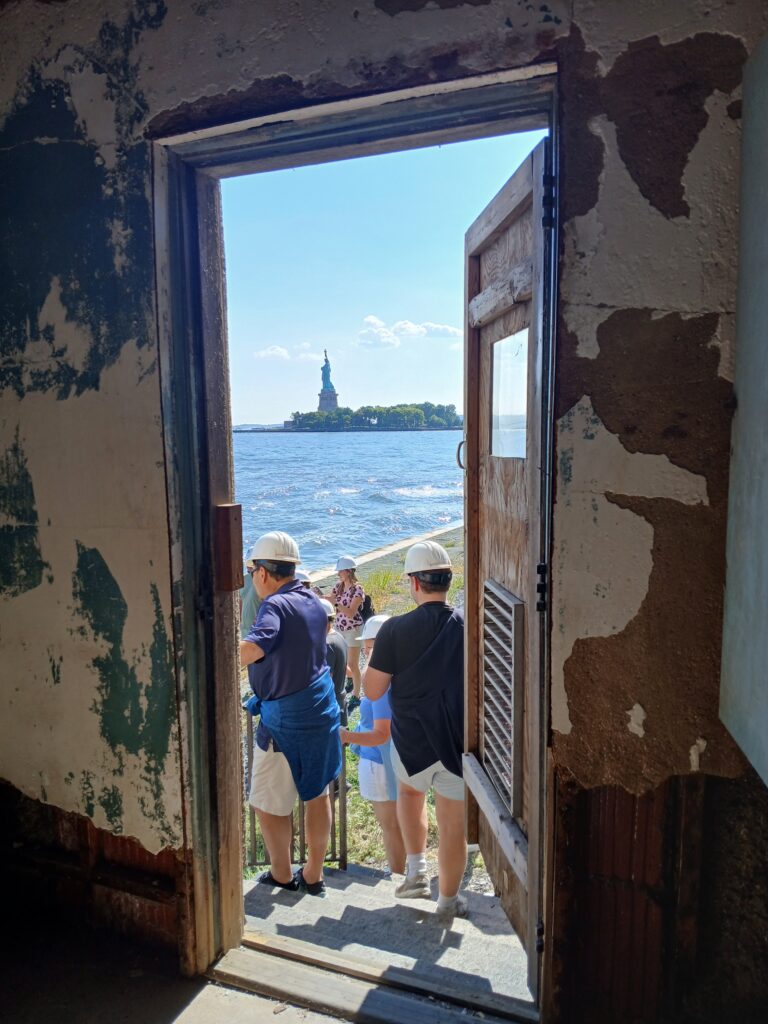
Tips: Use the bathroom before you go. The tour is 90 minutes and does not have restrooms available. Wear closed-toe shoes and dress for the weather. It is not climate controlled.
Tickets: If you get your tickets online, do so through Statue Cruises, look carefully at the timing. It is confusing. The screening time to get on the ferry coordinates with your tour time. There should be plenty of time between your screening and tour, but pay special attention. They could do a better job in this area in making it clear when the tour is. My ticket only had the screening time on it. Tickets are $75 each and it includes your entrance to Ellis Island, Liberty Island (to visit the statue from the outside), the ferry rides and the hard hat tour.
